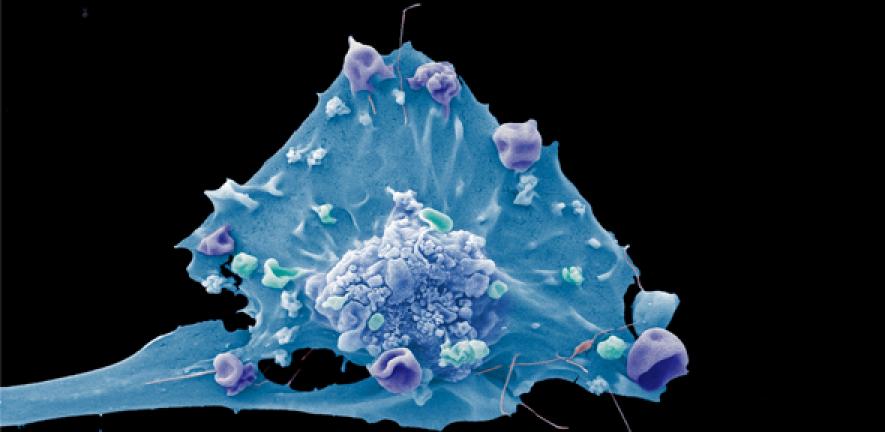University of Alberta researchers have brought a new genetic marker to the breast cancer map, increasing the list of genetic mutations clinicians can look ahead to in cancer screenings. The genetic marker—known as rs1429142—became observed to confer a better chance of breast cancer in Caucasian girls carrying the genetic version than women without the variant. In premenopausal women, that threat reached as high as 40, in line with the cent. The capacity to discover one’s genes and their variations (known as alleles) may be important to early detection and lifestyle-saving treatment.

This is essential due to the fact the more we’re able to create an entire photograph of all of the genes and all the variations and mutations that contribute to most breast cancers, the nearer we get to developing a genetic display screen for breast most cancers on a populace stage,” stated Sambasivarao Damaraju, a professor on the U of A’s Department of Laboratory Medicine & Pathology and a member of the Cancer Research Institute of Northern Alberta.
If we can perceive women at hazard earlier than they are diagnosed, and as long as we’ve got the assets to mitigate that risk through preventative procedures, we can reduce the overall burden of breast cancer hazard in a population. Though they have looked at the main centered on genetic reasons for breast cancer in Caucasian ladies, Damaraju’s group validated their findings in women of Chinese and African descent to explore the impact demographics may additionally have on cancer danger.
Breast cancer is the most not unusual cancer in women, with a predicted one out of eight ladies expected to broaden their lifetimes. While environmental factors like smoking, weight loss programs, or loss of physical pastime can lead to cancer, a person’s genes also contribute to the disorder’s hazard. One of the actual blessings of this study is that it brings a lot of focus to premenopausal breast cancers, which otherwise wasn’t idea a great deal approximately,” said Mahalakshmi Kumaran, Damaraju’s graduate student and a primary author of the paper.
The observation, posted in the International Journal of Cancer, is the primary of its type to study breast cancer threat in Caucasian ladies divided into premenopausal and postmenopausal groupings. Because most people with breast cancers are identified in ladies over 55, most genetic affiliation studies recognize postmenopausal women. However, inherited varieties of cancers, normally related to genetic mutations, are more likely to be in greater competition and be diagnosed before existence. The researchers tested more than 9,000 girls from Alberta for the study, using samples from patients identified with breast cancers and unaffected wholesome controls from the Alberta Cancer Research Biobank and The Alberta’s Tomorrow Project, respectively.
The DNA remoted from the members’ blood furnished clues to unique chromosomes that showed links to breast cancer danger. Using those clues, the team began to zero in on the specific areas of the chromosome to find genetic versions across samples. They observed that rs1429142 confirmed a steady association with breast cancer danger in multiple exams. When the information changed and was analyzed based on menopausal reputation, the risk was considerably greater for premenopausal ladies.
After confirming the link between the genetic variant and breast cancer, the crew then zoomed within the genomic location to become aware of the precise location of the gene at the chromosome and staining it for destiny researchers. Finding this genetic marker is like beginning with an excessive-resolution Google map of the arena and then slowly zooming in to the photograph of your house,” Damaraju said. “It is precious to do because now we’ve planted an avenue sign on the chromosome that could help destiny researchers perform further in-depth research.
Using global information from other genetic research of breast cancers and contributions from Vanderbilt University and St. Jude Children’s Research Hospital investigators from Tennessee, the team also became capable of validating their findings in ladies of Chinese and African descent. They observed that women of African descent had been especially in premenopausal breast cancer due to the variant gene. This underlined that genetic ancestry plays a critical function in cancer danger.
While the look is centered by and large on the genetic version on a single chromosome, Damaraju said they also observed promising leads for properly figuring out most cancers-associated genetic markers on different chromosomes. In the future, he hopes to peer his studies and contribute to a greater approach to treating breast cancer by tailoring treatment plans to the patient’s unique desires. My attention for the remaining 20 years has been to build a pipeline from genetic studies to gain the affected person,” he said. “We become aware of the genetic predispositions and awareness on growing populace-associated risk fashions to enable capability screening of populations and viable interventions.